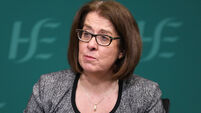Viking find 'extremely significant'
The discovery of the body of a Viking woman buried 1,100 years ago with a collection of artefacts is extremely significant, the National Museum of Ireland said today.
The find was made last Thursday at a site in Finglas in north Dublin where builders were constructing 48 apartments.












